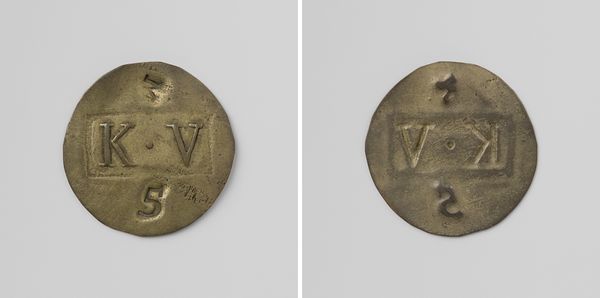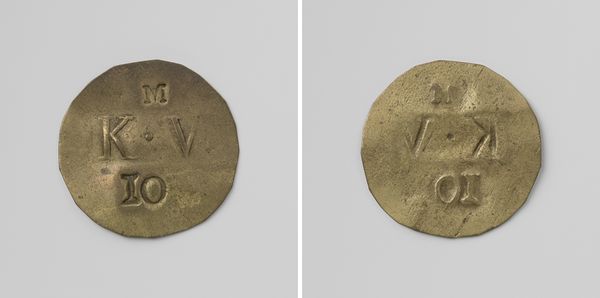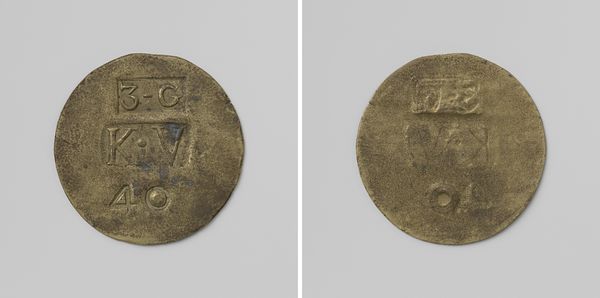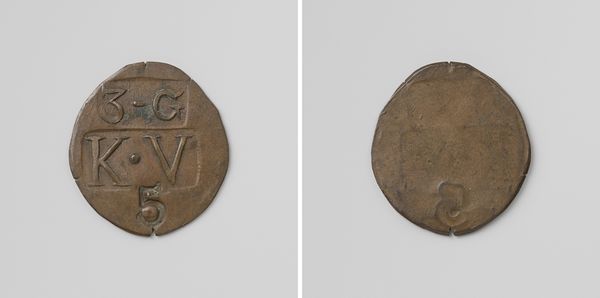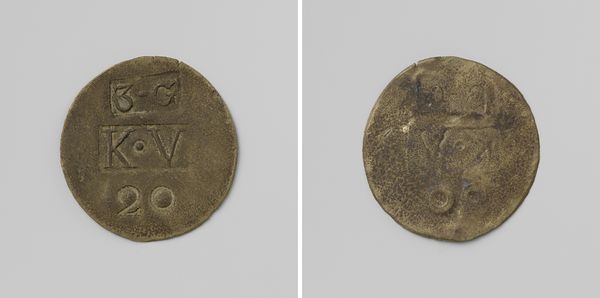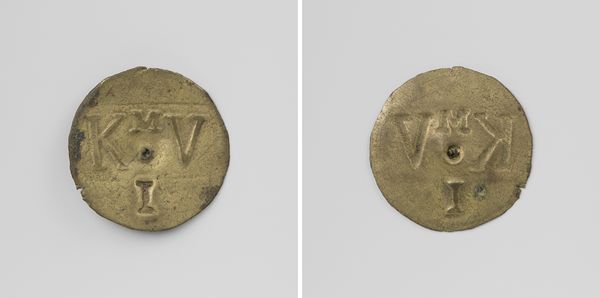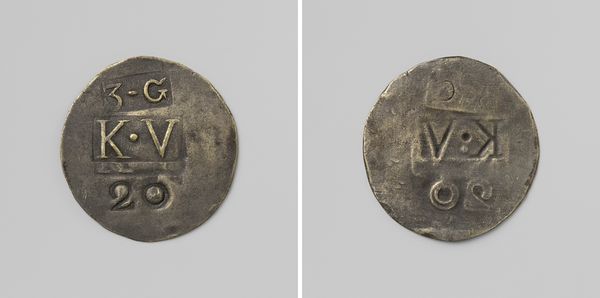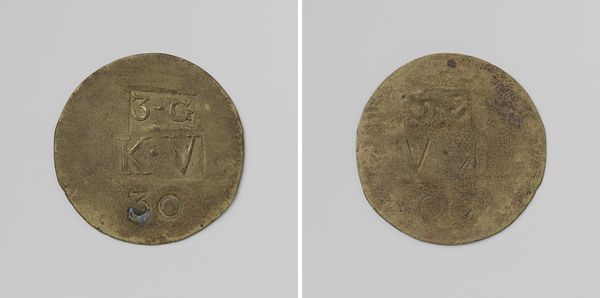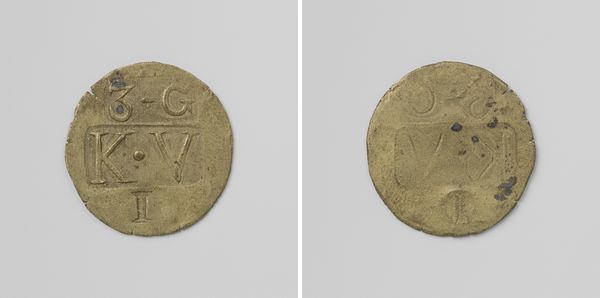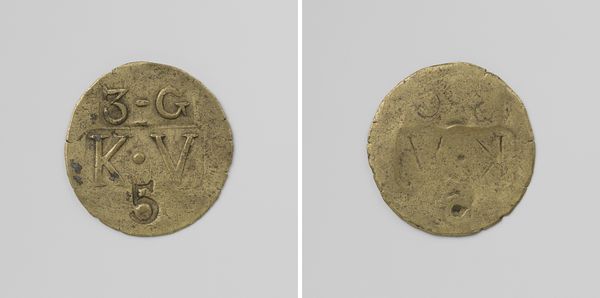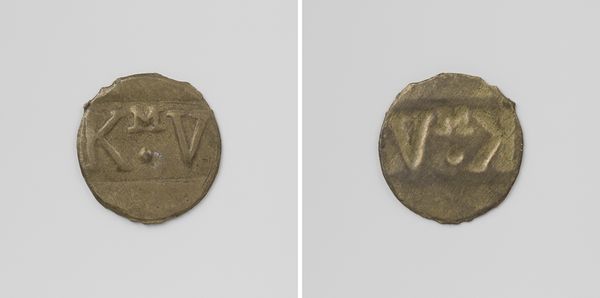
Tweede gesticht van de kolonie Veenhuizen, huismunt geslagen op last van de Maatschappij van Weldadigheid ter waarde van vijf cent 1818 - 1859
0:00
0:00
anonymous
Rijksmuseum
mixed-media, print, metal, relief, multiple
#
mixed-media
# print
#
metal
#
relief
#
appropriation
#
multiple
Dimensions: diameter 2.5 cm, weight 1.62 gr
Copyright: Rijks Museum: Open Domain
Editor: This is a peculiar artwork. It’s a coin made from mixed metals and print, dating from 1818-1859. It's titled "Tweede gesticht van de kolonie Veenhuizen, huismunt geslagen op last van de Maatschappij van Weldadigheid ter waarde van vijf cent." That's a mouthful. It seems very worn, very tactile somehow. What can you tell us about it? Curator: This isn’t just a coin; it’s a symbol of power and social control disguised as currency. Consider Veenhuizen – a colony established with utopian ideals of rehabilitating the poor, but quickly devolving into a site of forced labor and confinement. This "house money," as the title translates, was only valid within the colony walls. Editor: So it couldn't be used outside the colony? Curator: Precisely. This created a closed economic system. Imagine the implications for the people living there; they were essentially trapped, their labor controlled. The Society of Benevolence, who commissioned it, perpetuated an insidious cycle of dependency. The coin embodies the fraught intersection of philanthropy, punishment, and capitalism. Editor: It feels like it says a lot about control by isolating the people. Curator: Exactly! Think of Michel Foucault's work on institutions. This coin visually represents the mechanisms of surveillance and discipline employed within such spaces. Can you see the relief? It is crude, utilitarian—reflecting the dehumanizing nature of the institution itself. Editor: It’s a really unsettling object when you think about what it represents. The idea of using it for appropriation is also a clever touch. Curator: Absolutely. It's a potent reminder of the power dynamics inherent in seemingly benign systems and also about how those systems get manipulated for power. This isn't simply currency; it is the material representation of social subjugation. Editor: It is definitely a sobering artifact from the Rijksmuseum. I'll definitely have to remember that when considering these institutions and power.
Comments
No comments
Be the first to comment and join the conversation on the ultimate creative platform.
